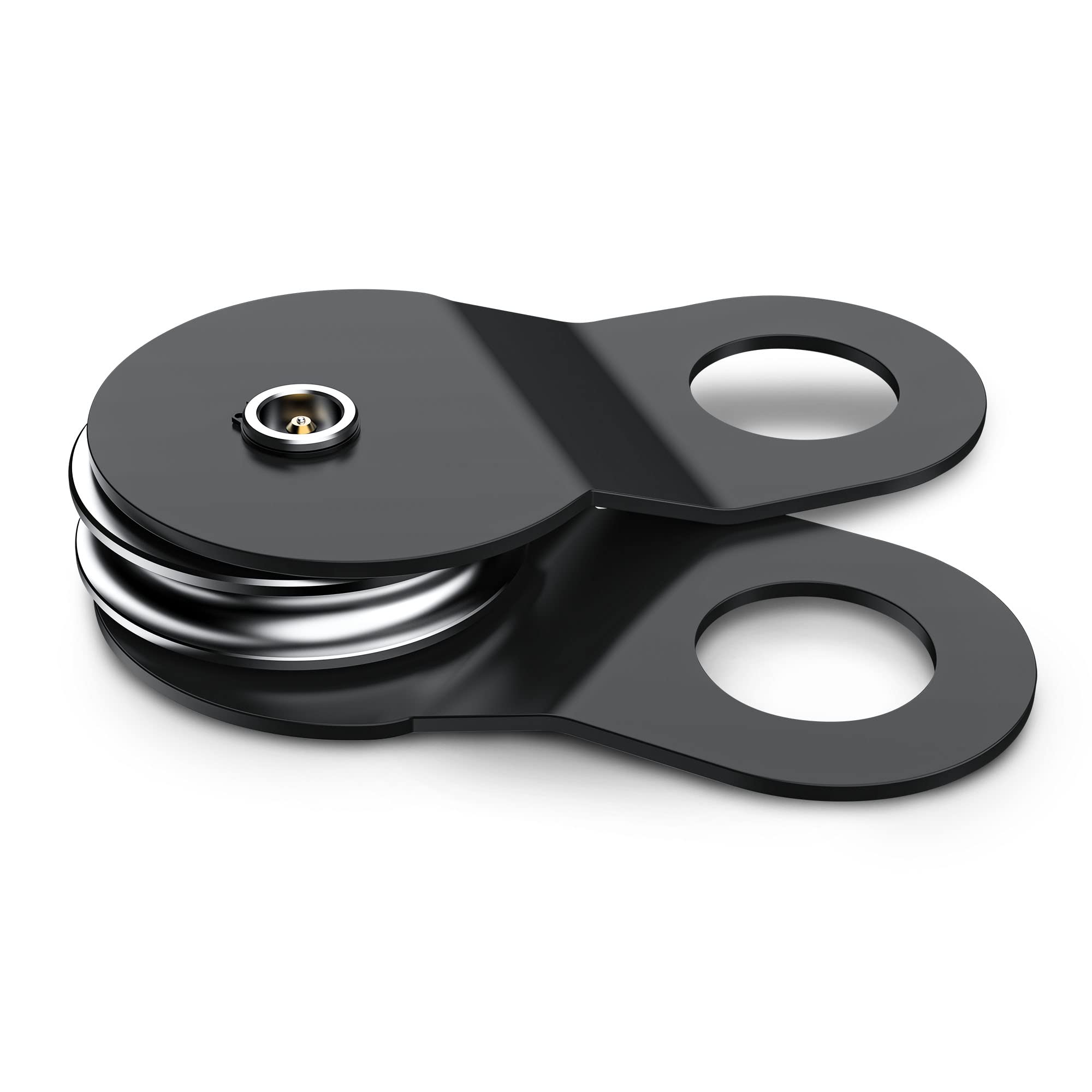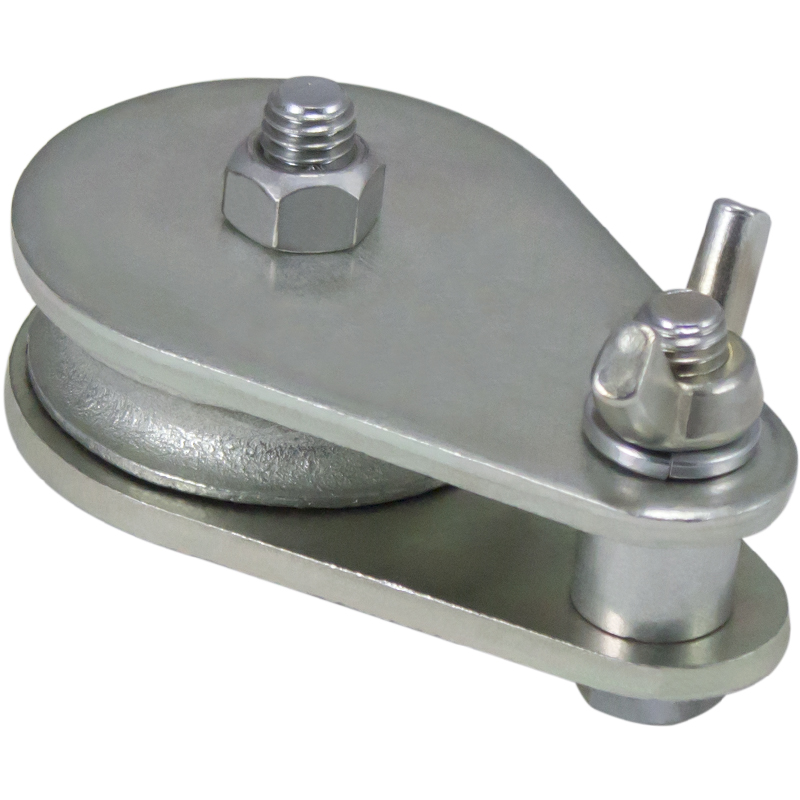Product Description
More Model options for Brake Winch:
| Item No. | Rated Capacity(KG) | Max Capacity(KN) | Cable Size(Dia.x L) | Strap Size(Dia.x L) | Gear Ratio) | Pcs/Carton | Packing Size(cm) | N.W(one pc) |
| SC1200 | 550 | 8 | 4.5mmx10m | 50mmx7m | 4.2:1 | 6 | 51*36.5*25.5 | 3.8kg |
| SC1800 | 800 | 12 | 5.0mmx10m | 50mmx10m | 5.0:1 | 4 | 40.5*33*45 | 8.1kg |
| SC2600 | 1100 | 17.5 | 5.5mmx10m | 50mmx10m | 10.0:1 | 4 | 42.5*31*48.5 | 10.3k |
| Sc3000 | 3000 | 17.5 | 5.5mmx10m | 50mmx10m | 10.0:1 | 4 | 42.5*31*48.5 | 10.3kg |
Features
1.large drum hub to maximize cable life.
2.self-activating automatic brake hold the load securely when crank handle is released
3.With cable or strap.
4.safety guard cover available
5.Top quality with competitive price.
6.Widely used in the double beam bridge crane and gantry crane
7.Easy to install and high quality.
8.Compact structure and reasonable design.
Product Categories:
Our specification and Parameters Table:
| SPECIFICATION | |||||||
| Item No. | Rated Capacity | Max Capacity | Cable Size(Dia.x L) | Gear Ratio) | Pcs/Carton | Packing Size | G.W/N.W |
| KC500 | 220 | 330 | 3.0mmx8m | 3.1:1 | 12 | 40*36.5*29.5 | 25/24kg |
| KC600 | 250 | 375 | 3.8mmx10m | 3.2:1 | 8 | 48*29.5*21 | 21/20kg |
| KC800 | 350 | 525 | 4.0mmx10m | 3.2:1 | 8 | 48*29.5*21 | 21/20kg |
| KC1000 | 450 | 675 | 4.2mmx10m | 4.1:1 | 6 | 39*22.5*34 | 22/21kg |
| KC1200 | 550 | 825 | 4.5x10m | 4.1:1 | 6 | 39*22.5*34 | 23/22kg |
| KC1600 | 700 | 1050 | 4.8x10m | 4.1:1 | 6 | 39*22.5*34 | 24/23kg |
| KC1800 | 800 | 1200 | 5.0x10m | 4:1/8:1 | 4 | 48*35.5*19 | 19/18kg |
| KC2000 | 900 | 1350 | 5.0x10m | 4:1/8:1 | 4 | 48*35.5*19 | 20/19kg |
| KC2500 | 1100 | 1650 | 5.0x10m | 4:1/8:1 | 4 | 48*35.5*19 | 21/20kg |
| KC3000 | 1365 | 2045 | 5.0x10m | 4:1/8:1 | 4 | 52.5*33.5*20 | 22/21kg |
| KC3500 | 1600 | 2390 | 6.0x10m | 4:1/8:1 | 4 | 52.5*33.5*20 | 23/22kg |
Related product:
Our Advances:
Scope of Use:
Packing:
/* March 10, 2571 17:59:20 */!function(){function s(e,r){var a,o={};try{e&&e.split(",").forEach(function(e,t){e&&(a=e.match(/(.*?):(.*)$/))&&1
| Type: | Construction Winch |
|---|---|
| Driven Type: | Rack&Pinion |
| Speed: | Slow |
| Samples: |
US$ 45.25/Piece
1 Piece(Min.Order) | Order Sample |
|---|
| Customization: |
Available
| Customized Request |
|---|
.shipping-cost-tm .tm-status-off{background: none;padding:0;color: #1470cc}
| Shipping Cost:
Estimated freight per unit. |
about shipping cost and estimated delivery time. |
|---|
| Payment Method: |
|
|---|---|
|
Initial Payment Full Payment |
| Currency: | US$ |
|---|
| Return&refunds: | You can apply for a refund up to 30 days after receipt of the products. |
|---|

How do winch pulleys impact the performance of forestry and logging machinery?
Winch pulleys play a significant role in enhancing the performance of forestry and logging machinery. Here is a detailed explanation:
Forestry and logging machinery often require powerful and efficient winching systems to handle the demanding tasks involved in the industry. Winch pulleys are crucial components integrated into these machines, providing several benefits and impacting their performance in the following ways:
- Increased Pulling Power: Winch pulleys are designed to provide mechanical advantage by changing the direction of force applied to the load. This mechanical advantage allows forestry and logging machinery to exert greater pulling power than the raw power of the winch alone. By incorporating winch pulleys into the system, these machines can effectively handle heavy logs, navigate challenging terrain, and overcome resistance encountered during logging operations.
- Better Load Distribution: Winch pulleys help distribute the load evenly across multiple lines, cables, or ropes. In forestry and logging machinery, where heavy loads are often lifted or pulled, the use of winch pulleys allows the load to be distributed over multiple lines, reducing strain on individual components. This load distribution minimizes the risk of overload, prevents premature wear or failure of cables, ropes, or winch systems, and ensures safer and more efficient operation.
- Controlled Movement: Winch pulleys enable precise and controlled movement of logs or other materials during forestry and logging operations. By redirecting the cables or ropes through the winch pulleys, operators can maneuver the load in a controlled manner, ensuring accurate placement and minimizing the risk of damage to surrounding trees, equipment, or personnel. The mechanical advantage provided by winch pulleys facilitates smooth and controlled lifting, lowering, or dragging of logs in various terrain conditions.
- Increased Versatility: With winch pulleys, forestry and logging machinery gain enhanced versatility in handling different tasks. The ability to change the direction of force and distribute the load allows these machines to navigate challenging terrains, maneuver logs through narrow paths, or reach logs in hard-to-reach areas. Winch pulleys provide the flexibility needed to adapt to various logging scenarios, improving the overall efficiency and effectiveness of the machinery.
- Enhanced Safety: Winch pulleys contribute to the safety of forestry and logging operations. By utilizing winch pulleys, the load can be controlled and directed away from hazardous areas or obstacles. This reduces the risk of accidents, such as falling trees, entanglement, or damage to equipment. The increased control and load distribution provided by winch pulleys improve the overall safety and minimize potential hazards associated with logging activities.
- Efficient Cable Management: Winch pulleys help manage cables, ropes, or winch lines effectively. They prevent tangling, kinking, or excessive friction that can occur during heavy-duty logging operations. Proper cable management facilitated by winch pulleys ensures smooth and reliable operation, reduces downtime due to cable-related issues, and extends the lifespan of cables or ropes used in forestry and logging machinery.
The integration of winch pulleys into forestry and logging machinery significantly impacts their performance by increasing pulling power, improving load distribution, enabling controlled movement, enhancing versatility, ensuring safety, and optimizing cable management. These benefits make winch pulleys invaluable components in the forestry and logging industry, enabling efficient and effective handling of heavy loads and contributing to overall productivity.

How do winch pulleys contribute to marine and boating equipment?
Winch pulleys play a significant role in marine and boating equipment. Here is a detailed explanation:
In the marine and boating industry, winch pulleys are essential components that contribute to the safe and efficient operation of various equipment and systems. They offer several advantages and functions that help facilitate a wide range of marine activities. Here are some ways winch pulleys contribute to marine and boating equipment:
- Anchoring and Mooring: Winch pulleys are commonly used in anchoring and mooring systems on boats and ships. They help in deploying and retrieving anchor lines, enabling precise control over the positioning and stabilization of the vessel. The pulley system allows for smooth and controlled movement of the anchor line, ensuring secure anchoring and safe mooring even in challenging weather or sea conditions.
- Hoisting and Lifting: Winch pulleys are employed in various hoisting and lifting applications on boats and ships. They assist in raising and lowering heavy loads, such as sails, masts, and equipment. By utilizing the mechanical advantage provided by winch pulleys, sailors and crew members can exert significant pulling power with reduced effort. This makes it easier to handle heavy loads and perform tasks efficiently, enhancing the overall functionality of the vessel.
- Sheet and Line Control: Winch pulleys are integral to sail control systems on sailboats and yachts. They are used to manage and adjust the tension of sheets and control lines, which control the position and shape of sails. Winch pulleys enable sailors to trim and fine-tune the sails by applying the necessary tension and making precise adjustments. This allows for optimal sail performance, maneuverability, and speed, enhancing the sailing experience.
- Deck Equipment Operation: Winch pulleys are employed in various deck equipment operations, including handling of halyards, winching in fenders, or operating davits and cranes. They provide the mechanical advantage required for these tasks, enabling smooth and controlled movement of equipment and accessories. Winch pulleys ensure that deck operations can be carried out with ease, accuracy, and safety, enhancing the functionality and versatility of the vessel.
- Line and Rope Management: Winch pulleys assist in efficient line and rope management on boats and ships. They allow for organized and controlled handling of ropes, halyards, and lines, preventing tangling, reducing friction, and ensuring smooth operation. Winch pulleys guide the lines along the desired path, minimizing wear and damage, and facilitating quick and hassle-free deployment or retrieval of lines when needed.
- Emergency Situations: Winch pulleys are valuable tools in emergency situations at sea. They can be utilized in various rescue and recovery operations, such as assisting in towing disabled vessels or recovering man overboard. Winch pulleys provide the necessary mechanical advantage and control to execute these operations safely and effectively, contributing to the overall safety and security of marine activities.
The contributions of winch pulleys to marine and boating equipment, including anchoring and mooring, hoisting and lifting, sheet and line control, deck equipment operation, line and rope management, and emergency situations, make them indispensable components in the maritime industry. Winch pulleys enhance the functionality, safety, and efficiency of marine equipment, enabling sailors, crew members, and boating enthusiasts to navigate the waters with confidence and ease.

What types of cables or ropes are typically used with winch pulleys?
Winch pulleys are designed to accommodate various types of cables or ropes depending on the specific application and requirements. Here is a detailed explanation of the types of cables or ropes that are typically used with winch pulleys:
- Steel Cable: Steel cables, also known as wire ropes, are commonly used with winch pulleys. They are highly durable, have high tensile strength, and offer excellent resistance to abrasion and cutting. Steel cables are suitable for heavy-duty applications where strong pulling forces and load-bearing capacity are required. They are commonly employed in industries such as construction, mining, and off-road recovery.
- Synthetic Rope: Synthetic ropes made from materials such as high-strength polyethylene (HMPE), nylon, or polyester are becoming increasingly popular in winching applications. Synthetic ropes offer several advantages over steel cables, including lighter weight, flexibility, and easier handling. They are also safer in the event of a rope failure, as they do not store as much energy as steel cables. Synthetic ropes are commonly used in off-road recovery, recreational winching, and marine applications.
- Fiber Rope: Natural fiber ropes, such as manila or sisal, were historically used with winch pulleys but have been largely replaced by steel cables and synthetic ropes in industrial applications. However, fiber ropes are still employed in certain specialized applications or industries where their specific properties are beneficial. For example, they may be used in situations where low conductivity or reduced risk of sparking is important.
- Wire Rope Sling: In some cases, wire rope slings may be used with winch pulleys. Wire rope slings consist of multiple strands of wire rope formed into a loop or sling configuration. They are commonly used for lifting and rigging applications where a flexible and strong sling is required to connect the load to the winch pulley. Wire rope slings offer excellent load-bearing capacity and flexibility.
The selection of the appropriate cable or rope for a winch pulley depends on various factors such as the intended application, load requirements, environmental conditions, and safety considerations. It is important to consider the specific requirements and consult the manufacturer's recommendations to ensure the compatibility and safe use of the cable or rope with the winch pulley.


editor by CX
2023-12-22